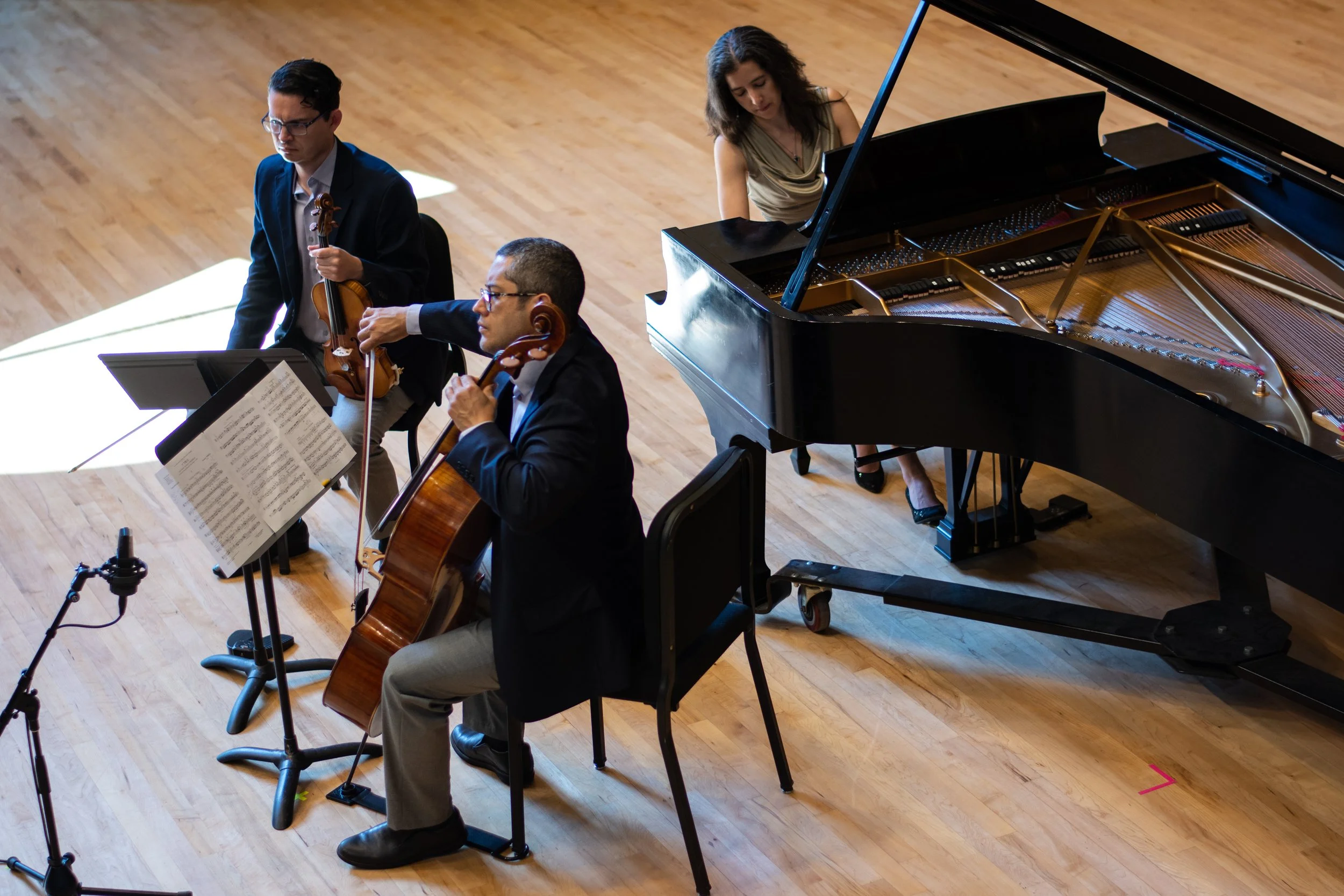Reverón Piano Trio (from top left): Simón Gollo, violin; Horacio Contreras, cello; Ana María Otamendi, piano
The Reverón Piano Trio—Horacio Contreras, cello; Ana María Otamendi, piano; and Simón Gollo, violin—are all Venezuelan artists, who now make the United States home. Active as pedagogues and recitalists, the trio focuses on the under-represented music of Latin America.
In addition to performing and recording, Reverón—in collaboration with the Sphinx Organization—is creating the Sphinx Catalog of Latin American music, with inclusion so far for cello settings and for piano trios.
“The idea is to make these works more available to professionals,” Otamendi says. “It’s quite large—3000 entries for cello, 300 for trio.
“Finding scores is a big issue if a composer is not known,” she says. “We’re trying to be ambassadors.”
Reverón Piano Trio formed in 2017. Each member teaches in a different part of the country, and they come together about 20 times a year to perform.
“All three of us are pedagogues, with full-time jobs that we take seriously,” Otamendi, an assistant professor at Louisiana State University, says. “Performing full-time would be exhausting.”
In exile, the trio has formed a close bond that supersedes their profession.
“It’s more than just a group,” Otamendi says of Reverón, “beyond music-making; deeply personal. When we get together, it feels like family.”
Reverón’s focus on under-represented repertoire seems prescient, with a broadly supported industry trend in place to make changes—changes that reflect the inclusion of sophisticated voices that have been overlooked.
“Everyone is more and more aware how problematic it has become to program dead white guys,” Otamendi says. “Let’s hope it’s not just a fad, not a bunch of token diversity concerts.
“Variety is incredibly important,” she says. “I don’t want to hear an all-Brahms recital. I want to appreciate Brahms next to a French piece, or a Spanish piece. You appreciate the difference in the language. The way a composer writes is tied to the mother tongue. And certain music has an even bigger stamp, by using the flavors of popular music.”
Otamendi feels these changes taking hold with her students—an important catalyst for future programming.
“Most students are aware that they have to know the core repertoire,” she says. “You can’t graduate without the tools to perform. We spend a fair amount of time on it, and it really fills me with joy.
“But the newer generation is excited about our music. Their reaction is always the same: ‘Wow I love this piece, I’ve never heard it.’ One student has made her whole degree in under-represented music. Latin American art-song makes a student want to learn Spanish or Portuguese diction. I think it’s wonderful.”
Otamendi also hopes to make changes with audiences as well.
“I go see jazz or flamenco, and somebody will scream out,” she says. “I wish we did that in classical music. Performers need to tell audiences how excited they are about the music, and why the experience is so enjoyable for us. When we talk to an audience it makes such an impression.”—Keith Powers


